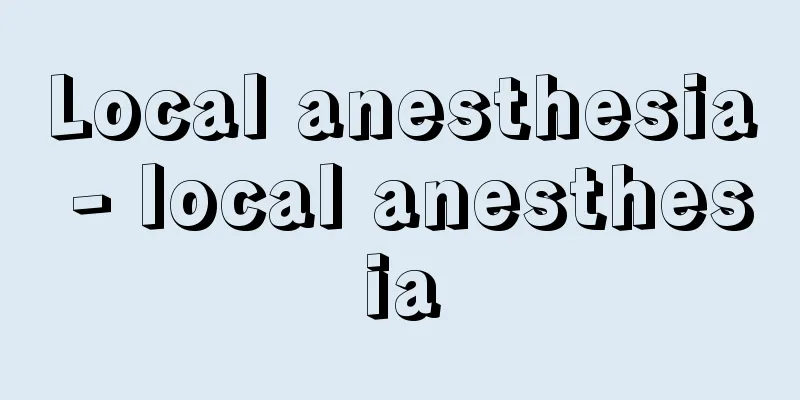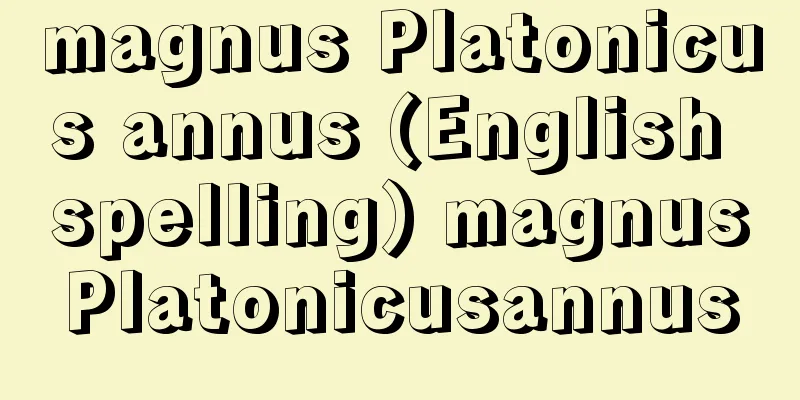Local anesthesia - local anesthesia

|
This is a method of reversibly blocking the conduction of peripheral nerve impulses in some way, to obtain an anesthetic effect on the area controlled by that nerve. There are also methods of physically compressing the nerve, applying electrical stimulation with a needle, or cooling it (cryoanesthesia), but the most common method is to use a local anesthetic. Local anesthetics are mainly injected into the nerve, but they can also be injected into the veins of a limb with blood flow blocked to anesthetize that area (intravenous local anesthesia). Local anesthetics available on the market include procaine, tetracaine, dibucaine, lidocaine, mepivacaine, bupivacaine, chloroprocaine, and ropivacaine, each with their own advantages and disadvantages. In any case, it is best to use an anesthetic that has tissue penetration, is fast-acting, has sufficient anesthetic power and duration, is reversible in action, does not leave nerve damage, and has low toxicity to the whole body. Types of local anesthesia include spinal anesthesia (officially called spinal subarachnoid anesthesia), epidural anesthesia, nerve block, infiltration anesthesia, and topical anesthesia, and a special type is intravenous local anesthesia. The advantages of local anesthesia are: (1) it is easy to administer, (2) the patient is conscious so cooperation can be obtained, and (3) it has little effect on the body. On the other hand, the disadvantages are: (1) it makes the patient anxious, (2) nerve blocks, etc., require skilled techniques, (3) it has a limited duration of action, and (4) there is a possibility of poisoning from local anesthetics. [Hideo Yamamura and Yoshitsugu Yamada] [References] | | | |Source: Shogakukan Encyclopedia Nipponica About Encyclopedia Nipponica Information | Legend |
|
なんらかの方法で末梢(まっしょう)神経の刺激伝導を可逆的に遮断し、その神経の支配領域の麻酔効果を得る方法である。物理的に神経を圧迫したり、針による電気刺激を加えたり、あるいは冷却する方法(冷凍麻酔)もあるが、局所麻酔薬を用いるのがもっとも一般的である。局所麻酔薬はおもに神経に注射するが、血流を遮断した四肢の静脈内に入れて、その部分を麻酔することもある(静脈内局所麻酔)。 局所麻酔薬には、プロカイン、テトラカイン、ジブカイン、リドカイン、メピバカイン、ブピバカイン、クロロプロカイン、ロピバカインなどが市販されており、それぞれ一長一短がある。いずれにしても、組織浸透性があり、効果の発現が速く、十分な麻酔力と持続時間をもち、かつ、その作用は可逆的で神経に障害を残さないもの、全身への毒性が少ないものがよい。 局所麻酔の種類としては、脊椎(せきつい)麻酔(正式には、脊髄(せきずい)くも膜下麻酔とよばれる)、硬膜外麻酔、神経ブロック、浸潤麻酔、および表面麻酔があり、特別なものとしては静脈内局所麻酔がある。局所麻酔の利点としては、(1)実施が簡単である、(2)意識があるので患者の協力が得られる、(3)生体に対する影響が少ない、などがある。その反面、欠点としては、(1)患者に不安を与える、(2)神経ブロックなどは熟練した手技を要する、(3)作用時間に制限がある、(4)局所麻酔薬による中毒をおこす可能性がある、などがあげられる。 [山村秀夫・山田芳嗣] [参照項目] | | | |出典 小学館 日本大百科全書(ニッポニカ)日本大百科全書(ニッポニカ)について 情報 | 凡例 |
>>: Minimal surface - kyokushokyokumen (English spelling)
Recommend
"The Life of a Film Director" - Aru Eiga Kantoku no Shogai
…His films, "Saikaku Ichidai Onna," &qu...
Middle East
…A translation of the regional concept of the Eng...
Saint-Nazaire (English spelling)
A port city in the Loire-Atlantique department in ...
Nekropolis (English spelling)
The Greek word for "city of the dead" or...
Crops and Man
...In 1966, Sasuke Nakao, in his book "The O...
Churenyi [island] - Churenyi
Also known as Seal Island or Roppen Island. Tyuren...
Alaska Hinoki - Arasuka Hinoki
...Because its wood resembles that of cypress, it...
Educational Program - Kyoikuban Gumi
According to the Broadcasting Law, educational pr...
Merchant ship - Gyoshosen
...Generally, husbands and wives engaged in casti...
Nujiang - Where?
A river that flows through southwestern China. It...
Alkaline addition method - Alkaline addition method
…Also, to make up for the sake shortage during Wo...
Magnolia liliflora (English name) Magnolia liliflora
…[Kunihiko Ueda]. … *Some of the terminology that...
Ainsworth, GC (English spelling) AinsworthGC
…By this time, mycology had become an independent...
Eigenji Temple
This is the former town area in the eastern part o...
Limfjorden (English spelling)
A marine lake that crosses the northern part of th...









